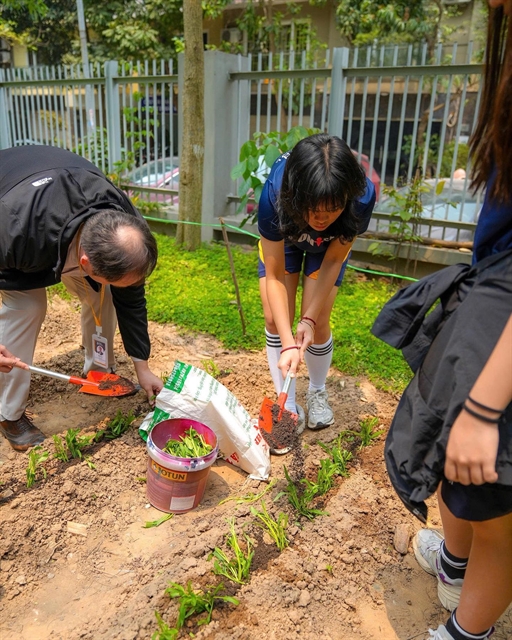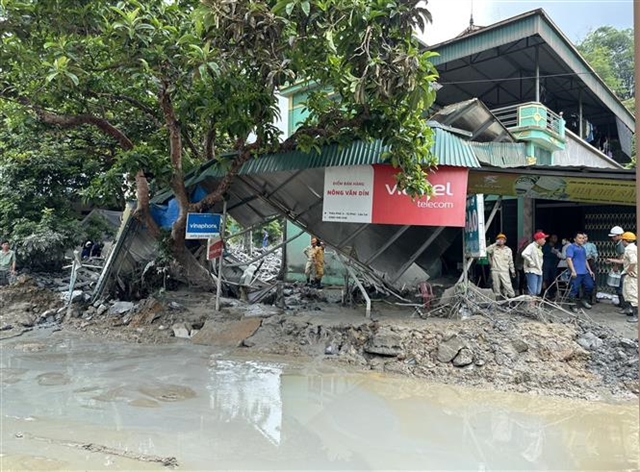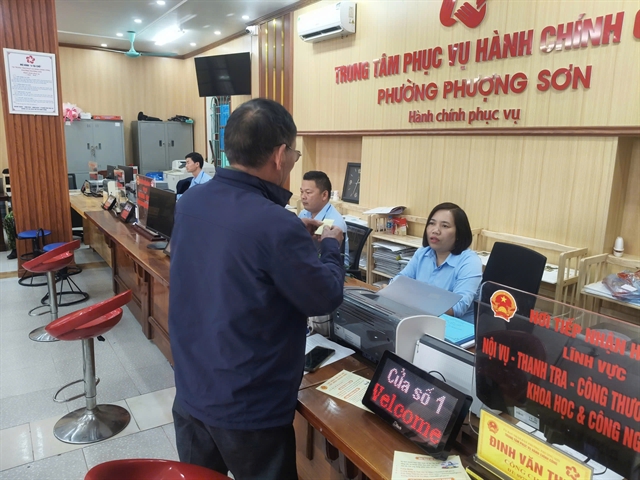 Environment
Environment

 |
| Water, mud, and ore flooded 46 houses in Phời 3 Village. — VNA/VNS Photo |
HÀ NỘI — The Tả Phời Commune People's Committee in Lào Cai City has provided an update on the assessment of the aftermath of the tailings lake breach at the Tả Phời copper ore extraction plant, which is managed by Tả Phời Copper Joint Stock Company - Vinacomin.
The incident, which occurred on August 8, has had a significant impact on 46 households in Phời 3 Village, Tả Phời Commune, where water, mud, and ore entered their homes. Among these households, 24 have experienced severe damage. Additionally, approximately 49 hectares of rice fields, croplands, and aquaculture zones have been submerged. Furthermore, nearly 50 water wells have been compromised, and several irrigation and domestic water supply systems have been disrupted.
To determine the root cause of the culvert breakdown containing sludge and tailings from the Tả Phời copper mining plant, the People's Committee of Lào Cai Province has set up a specialist team tasked with gathering pertinent technical documents and information.
In an urgent report sent to several government departments, the People's Committee of Lào Cai Province indicated that heavy rainfall on August 7 and previous days had led to a surge in water volume within the lake. The preliminary assessment points to high water levels in the lake at the time of the incident, exerting pressure on the D2000 surface sewer line running through the lake bed.
Field tests conducted by various entities including the Department of Natural Resources and Environment of Lào Cai Province, the Department of Industry and Trade of Lào Cai Province, the People's Committee of Lào Cai City, the People's Committee of Tả Phời Commune, and the Environmental Crime Prevention and Control Division of the Lào Cai Provincial Police Department have collectively determined that the tailings lake, positioned within a ravine, lacks a dependable surface water separation system. This deficiency has resulted in rainwater from the surrounding basin cascading into the lake, generating significant pressure.
Subsequent to this incident, the Environmental Pollution Control Department (under the Ministry of Natural Resources and Environment) has established a task force to conduct an on-site survey and procure samples of sewage sludge. These samples will be subjected to analysis to evaluate the potential environmental repercussions.
Hoàng Dương Tùng, former Deputy Director of the General Department of Environment, highlighted the gravity of this environmental occurrence, emphasising that stringent management of ore tailings was imperative to prevent spillage into the environment.
Accordingly, it was essential to promptly enact environmental response measures, encompassing the delineation of zones and the ongoing monitoring of soil and water quality for appropriate remediation, he said.
"The release of sludge and wastewater from the copper ore extraction plant into the environment poses significant hazards," Tùng said.
"The sludge water, resulting from the processes involved in copper refining, contains numerous metal compounds and chemical additives. Uncontrolled discharge into the environment could lead to extensive soil and water source contamination, triggering grave and enduring pollution repercussions."
According to the expert, the process of collecting and treating the environmental aftermath of such incidents is intricate and time-consuming. The enduring effects of toxic substances on both the environment and human health necessitate continuous vigilance by authorities, along with proactive measures to mitigate the aftermath of the occurrence. — VNS




